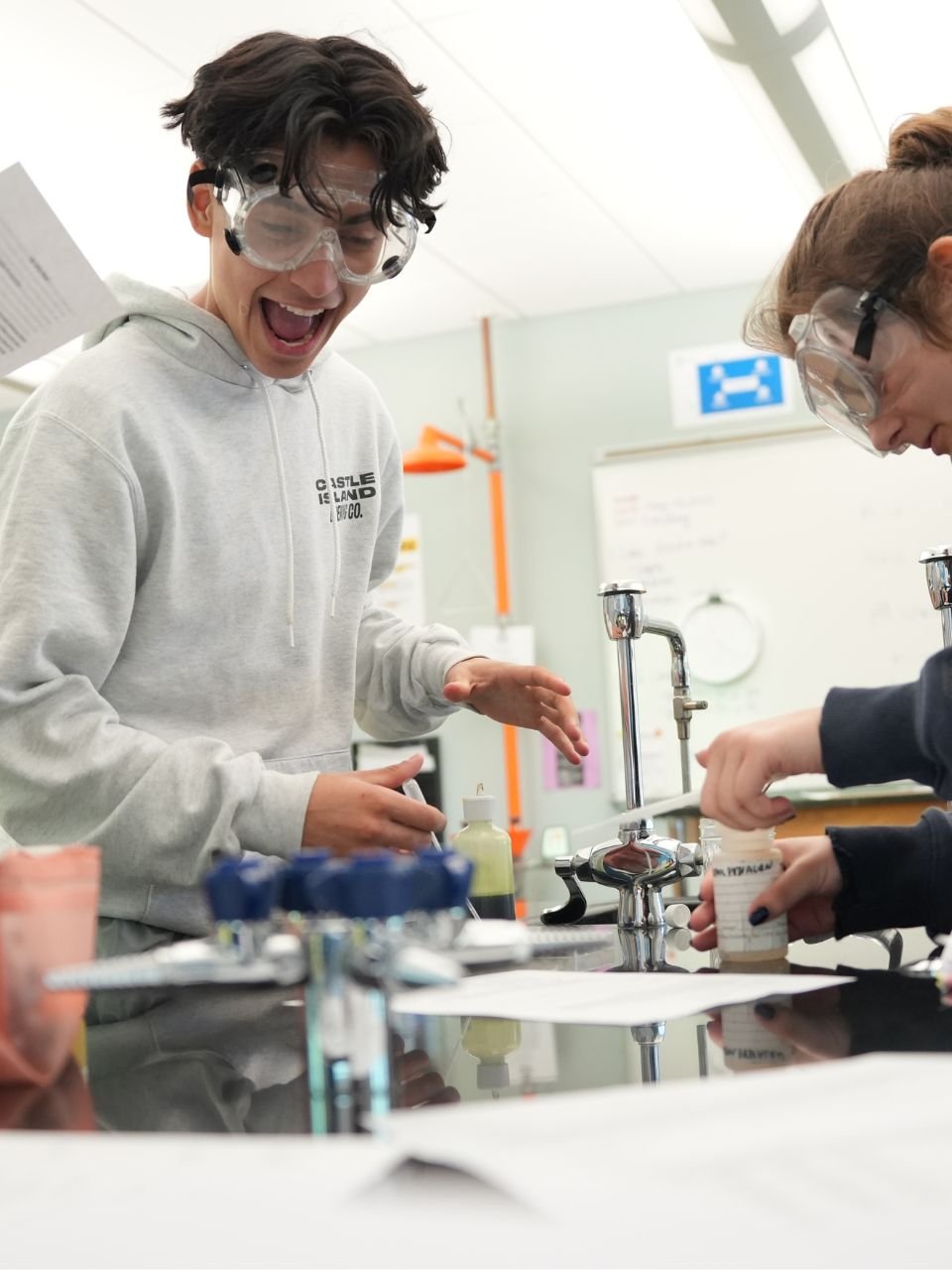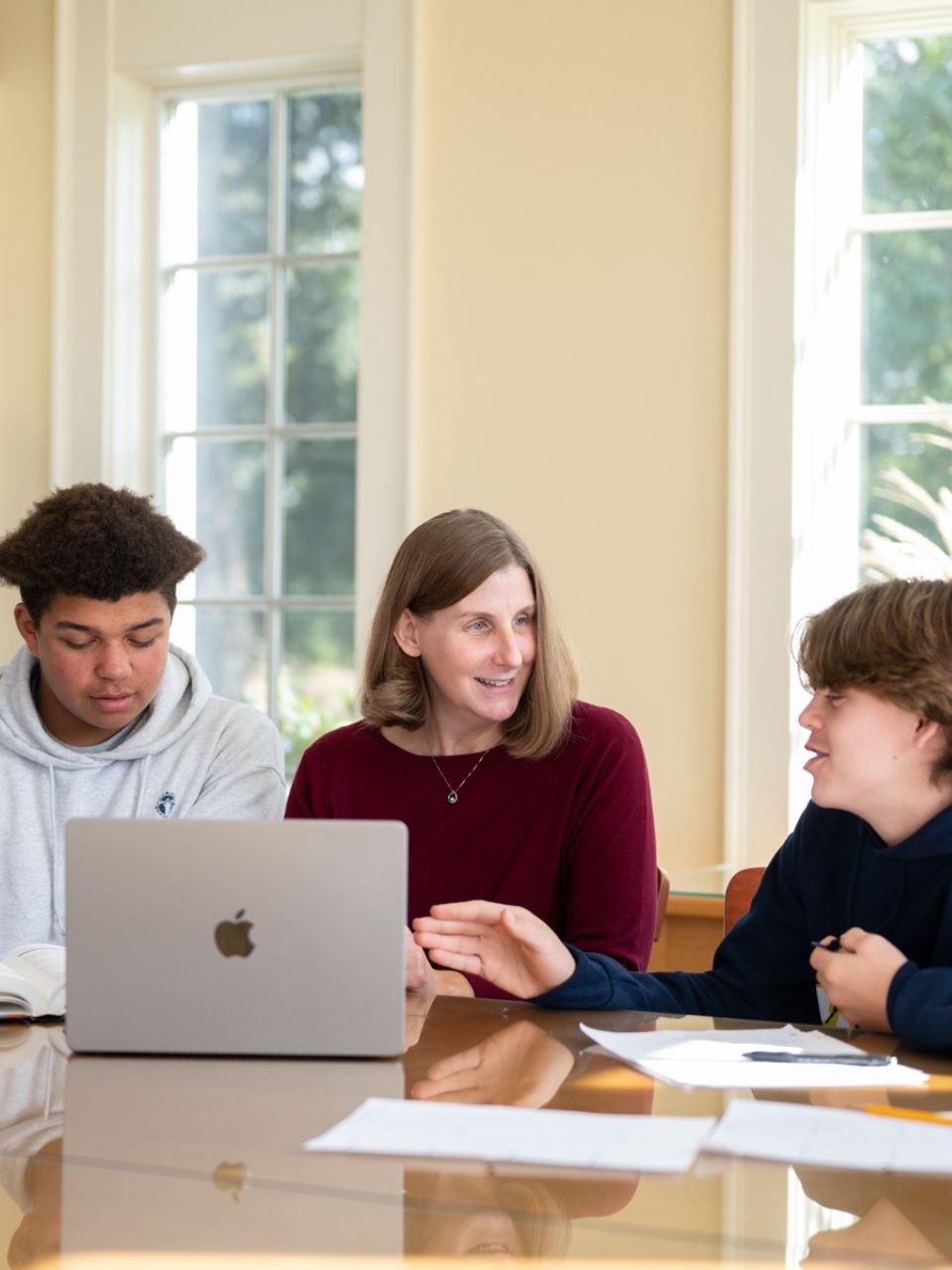- Our School
- Our Advantage
- Admission
- Elementary•Middle School
- High School
- Summer
- Giving
- Parent Resources
- For Educators
- Alumni
« Back
Lessons Learned from Remote Learning: Tips for Parents
September 2nd, 2020

By Stacey Sargent and Robert Kahn
Mid-March of 2020 thrust all of us into a brave new world, and parents, students, educators, and administrators worked hard to bring their expertise and experience along for the ride! Ultimately, June arrived and curriculum, teaching strategies, and personnel had become more or less accustomed to a routine of remote learning. But while educators came at this task from a perspective of “How does pedagogy, methodology, and curriculum translate?”, families often had to confront broader and more challenging perspectives involving multiple students in different schools, utilizing differing models, and competing for shared resources. Heading into this school year, at least we have been forewarned of the uncertainty ahead. There are factors we cannot control, and learning may take several different forms, including remote or hybrid phases, before we return to the world we knew in early 2020. Here are some tips from our experience to date specifically for parents on how to make remote learning most effective.
Create a successful learning environment
Just like in a classroom, it is important for students to feel comfortable and productive in their learning environment. Talk to your child about where in your home would be a good place to attend remote classes and complete school work. Ideally, the spot you choose should be a quiet, well-lit area with a desk or table and a comfortable chair. Remove items that could be a distraction and add needed supplies, such as writing utensils and paper. Many schools have published an at-home supplies list for the hybrid model, focused on the home learning center. In some cases, items like printers and articulating cameras are useful but costly. Less expensive versions are often fine, and schools or districts may have these items to loan out. Some parents may want to explore a cooperative pod approach to resources, bearing health mitigation in mind, where multiple families have access to items which may not be cost effective for individual households.
If your home allows, we recommend avoiding bedrooms as a learning venue, but space may be an issue, especially when multiple family members are going to school online and parents are working remotely. Teachers understand the drawbacks and constraints of virtual learning. However, as parents, you can help students focus and stay on task by being aware of the distractions posed by siblings or even adults passing through the learning area or lingering just off screen. In general, recreate the ‘class experience’ by not being a presence when your student is going to school. It’s an issue to talk about as a family if necessary.
Establish consistent routines
Your child’s school day is filled with routines at different parts of the day. Establishing routines at home can provide structure and consistency conducive to learning. Talk to your child about what routines they think would be important. Some routines to consider are meal and snack times, organization of school work and supplies, getting ready for classes, and break times. One consistent observation of many faculty was the need for supplemental executive functioning (EF) support in an all-remote mode.
Time management, preparation, memory aids, planning organizers, focus, and motivation are different depending on the level of monitoring available to your student. Several veteran instructors noted that they were impressed at how students responded to the EF challenges of remote learning. It was a “learning to swim by being tossed in the deep end” experience: overwhelming for some but a trigger for independent growth in others. As a parent, the more you can be a supportive observer and coach, while keeping it positive and collegial, the better. One tried and true method to avoid mixing the roles of parent and EF coach is to consult with your student’s teacher, advisor, or counselor about any observations before directly intervening with a strategy. Once a rapport is established, a school counselor or teacher can connect with other faculty, and meet with your student directly. In the case of an all-remote mode of learning, they will also have the opportunity to reach out to a person designated as your student’s executive function coach. Private tutorials in the pandemic have not dried up at all; many educators are available to help students with their organization, work load, and proactive planning.
Make the most of breaks
Help your child make the most of their down time in between classes. This is the time to use the restroom, grab water or a snack, and engage in movement activities. After class, encourage your child to step away from all screens, including phones and televisions. Take a family walk or engage in physical activities outside. Talented remote educators have learned the value of alternating activities on screen with other parts of the lesson that explicitly send students away for a task or a reflection. Screen fatigue is real; many working parents need no convincing of this. If the remote learning mode does result in some post-pandemic aversion to screen time, we may agree it’s a silver lining.
Keep in touch
When your child is learning at home, it is important for him/her to maintain a connection with the school. Check emails on a consistent basis for important school-wide updates. Maintain communication with teachers and advisors and reach out to counselors if needed. Even when your child is at home, he/she is still a supported and valued member of the school community. Deans, advisors, and counselors all conduct meetings virtually, similar to the drop-ins or scheduled visits they would normally have on campus. Take advantage of these extra opportunities to connect with faculty and team members. We’ve found a variety of creative ways that schools are continuing to build community online. One very simple one is for teachers to allow classes to have some group discussion time before and after the lesson. While maintaining an adult presence in the group is critical for safety, student feedback to teachers has been amazing when teachers allow less-structured ‘extended time’ for students to connect at the end of class for 10-20 minutes. Website hubs are great places to browse for community-building opportunities. In a remote mode, be alert for options to connect with school faculty and peers in non-class settings built into the school day, such as meetings, clubs, office hours, designated breaks, while continuing to encourage time away from the screen once the school day is done. As a parent, you may have a chance to provide input into your school’s plan for remote learning, so take that opportunity to suggest ways for student-faculty connection apart from the classroom hour, in hopes of approximating the way a school community functions.
As we navigate through the pandemic, remote learning has taught us a great deal; not only about the strategies and techniques that do and do not adapt to a digital interface, but also about the emotional and psychological demands of being a student and a teacher in circumstances where you often cannot control the interaction in expected ways. As an overall tip, patience and flexibility are even more essential to remote teaching, where despite the best efforts of both teachers and students, communication can take some unexpected turns. We will all benefit from absorbing the lessons that make us better, and making peace with the factors that are simply beyond our control.
Author
Stacey Sargent is a teacher at Landmark Elementary•Middle School. She has over three years of remote teaching experience as a reading tutor and an English language instructor. She has taught students all over the world through virtual learning platforms.
Rob Kahn was head of Landmark's Elementary•Middle School from 1985 to 2020, and before that was a tutor, teacher, academic advisor, department head, and dean of students at the school. He began teaching at Landmark in 1972 while at Harvard, and has his Master's Degree from Simmons University. He continues to stay involved at Landmark in a variety of roles.
Posted in the category Learning.






















